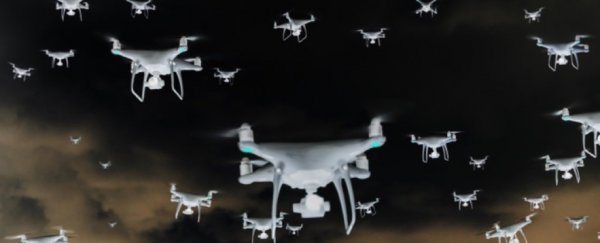A failed assassination attempt against Venezuelan President Nicolás Maduro on Saturday was mounted with explosive-armed drones, according to news reports.
Nine days earlier, and on the other side of the world, terrorists claimed to have sent an armed drone to attack the international airport in Abu Dhabi, the capital of the United Arab Emirates.
No one was killed in either case, and the circumstances of both remain murky. But a new and dangerous era in non-state-sponsored terrorism clearly has begun, and no one is adequately prepared to counter it.
In Caracas, Venezuela's capital, government officials said one or more drones detonated explosives above the audience at a nationally televised military event.
Several people were injured, though not the president or his wife, Cilia Flores, who was standing next to him onstage. Maduro blamed his political opponents.
In Abu Dhabi, Houthi rebels from Yemen said they had launched a drone attack at the airport. UAE authorities deny the incident occurred, but the greater truth is that it is technically possible - indeed, not difficult at all - for the rebels to have done so.
Reinforcing this is the wide belief that the Houthis are being advised by Iran's special security services, which have shown an impressive capability for such things.
Both of these episodes will encourage other technologically savvy groups and disgruntled individuals to use drones to commit political violence.
While news of the events in Venezuela and the UAE was disturbing, the failed attempt in Abu Dhabi is especially worrisome because of the mass casualties that destroying an airliner would cause.
Unmanned aerial vehicles (UAVs, or drones) represent a fresh threat to the traveling public. A concerted effort must be made to confront this threat before lives are lost.
Weaponized drones start with a tactical advantage: Most can fly lower than current technology is capable of readily detecting.
Even if they were carrying only a small quantity of explosives, they could bring down a civilian aircraft in flight. Commercial airliners are vulnerable during takeoffs and landings when there is limited time for aircrews to react to unforeseen, and potentially hostile, events.
A simple hobbyist's drone can down an airplane when joysticked into the airliner's path. Militarized drones, the kind probably available to groups such as the Houthis, are heavier (but can weigh less than an adult human), and can carry several pounds of explosives at speeds up to 100 miles per hour (160 km/h) with a range of 400 miles (640 kilometres or about the distance between Washington and Boston).
These flying robots can be programmed to maneuver into active airspace and wreak havoc without human guidance.
Airport security, as currently designed, is focused on ways to mitigate threats from people who have access to the facility, such as passengers and staff, and from cargo transiting the grounds.
Airports are not designed to guard against purposeful attacks from the sky. More attention to finding ways to monitor low-flying objects such as drones is urgently needed.
One option: Position security drones above airports, looking down with constant vigilance for airborne threats.
Another: Eventually require all drones to be connected to local cellular networks so that, at least, hobbyists' drones can be detected before they collide with commercial jets.
Protecting heads of state from drone attacks will be even more complex, so varied are the leaders' schedules and public appearances.
Not only can preprogrammed drones swoop in from almost any direction, but they can also be used by anyone with the means to buy them.
Worse, threats from the sky used to be exclusively the domain of nation-states. That has changed in the past two weeks. Now, a far broader and more elusive menace has emerged and must be addressed.
Weaponized drones are firmly in the hands of non-state actors. No one is safe. Not heads of state. Not the flying public. We cannot afford delay in devising ways to combat this new peril.
2018 © The Washington Post
This article was originally published by The Washington Post.
